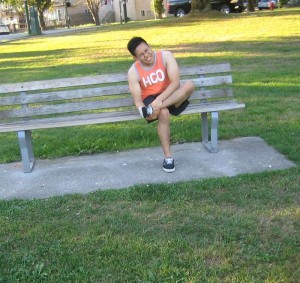Blisters are small-sized bubbles filled with blisters that develop right under the skin. Blisters have been the common cause of foot pain, especially among runners and other athletes. It is important to note that blisters usually manifest on the base of the foot but they can also develop along the sides or on the top. Any injury to the skin or certain diseases can cause the upper layer of the skin to separate from the middle layer and the space in between these skin layers are filled with fluid as a protective response.
If an individual develops a blister on the base of the foot, it is best that you know how to handle one. All you have to do is to enroll in a first aid class today.
Burns and friction
In most cases, a blister develops as a result of friction and pressure, maybe from shoes that are overly tight or due to constant rubbing. A blister contains clear fluid but if caused by injury, it can contain blood.
A burn can also cause blister formation. In case the blister develops due to a burn and ends up infected, it can contain pus. The treatment is aimed on keeping the blister clean and even releasing the fluid to reduce the pain.

Athlete’s foot infection
Athlete’s foot infection or tinea pedis can lead to the formation of small-sized blisters on the base of the foot. It is important to note that athlete’s foot infection develops once a certain type of fungus grows on the skin.
The fungi thrive in moist and warm places such as the feet. The skin will develop small-sized blisters that can be irritated initially and eventually crack open, resulting to a crusted rash. Athlete’s foot can be managed with several over-the-counter antifungal drugs.
Contact dermatitis
Contact dermatitis can also cause small blisters on the base of the foot to form as a response to an allergic response. Dyes and chemicals utilized in the manufacturing of socks and shoes, fragrances used in soaps and detergents as well as some oral and topical medications can lead to blisters. The blisters can also develop as a reaction to certain plants such as poison ivy if the base of the foot is left exposed while outdoors. The treatment involves the application of calamine lotion as well as topical or oral antihistamines.
Dyshidrotic eczema
Dyshidrotic eczema is a skin issue that leads to the formation of small blisters on the feet and palms of the hands. This condition is quite common among women than men. The blisters can severely itch that lasts up to 3 weeks and more prevalent during certain times of the year, particularly among those who suffer from seasonal allergies. Take note that these blisters crack open while they heal, thus leaving behind patches of scaly, dry skin. The treatment includes the application of steroid creams and oral antihistamines.
